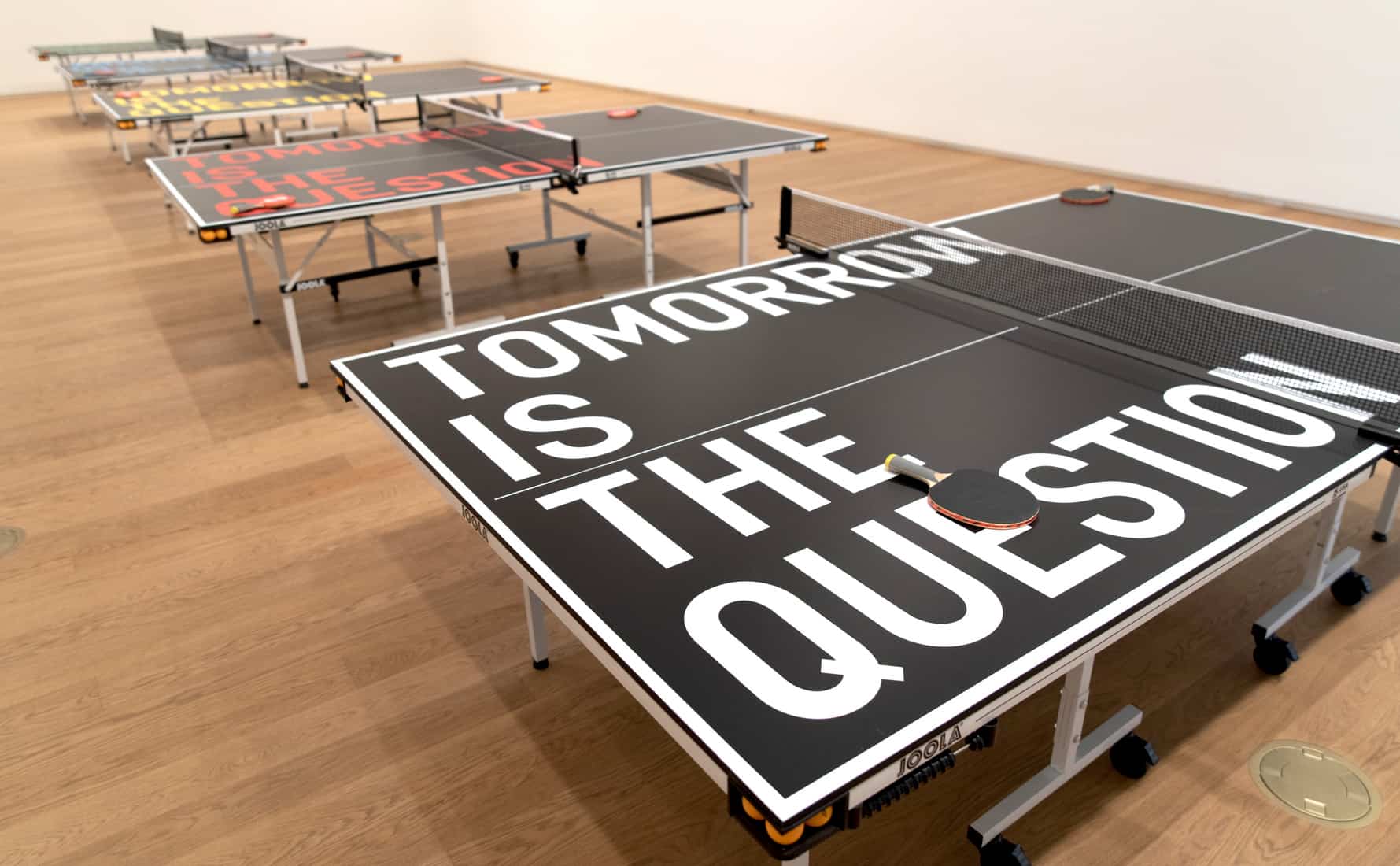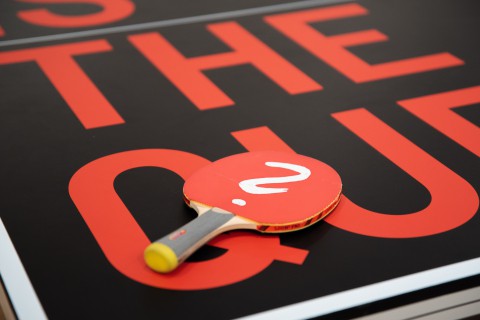
Walking into an art gallery can be an intimidating experience. While our eyes are welcome to observe the works exhibited, the rest of our bodies are paused from their mundane existence.
We walk carefully on our tiptoes, we breathe quietly and slowly, and we talk in careful murmurs — if we talk at all — to avoid disrupting the pristine room where the artworks solemnly hang from big white walls.
And then, there are works like Rirkrit Tiravanija’s Tomorrow is the Question, which is currently being exhibited at Remai Modern, that make us rethink our relationship to art, to the gallery space and to other people.
Inside the gallery, there are five ping pong tables with the words “tomorrow is the question” printed in on them in vinyl, a handful of paddles and a bucket full of ping pong balls. It is hard to pin down an accurate description of the room because of the participatory nature of the exhibition.
When I first entered the gallery, two children were playing on the farthest table, and most of the balls were spread across the floor, but the scene is in constant flux given that the exhibit changes in accordance with the participants.

Tomorrow is the Question invites visitors to activate the piece by engaging in a ping pong game. The visitors are a necessary component of the installation, which aims to collapse the distinction between art and life through presence and participation.
Throughout his artistic career, Rirkrit Tiravanija has questioned the sacredness of the gallery display. With Tomorrow is the Question, he proposes to subvert the conditions of socialization in the art gallery.
By incorporating ping pong tables, the artist creates the conditions for the audience to physically experience the objects inside the gallery, thus becoming active rather than passive spectators. The exhibit enables people to behave playfully in a highbrow environment, and even to make noise in a commonly silent place.
However, not only does the artist create a place where people can interact with the art but also one where they connect with each other. Tiravanija’s works are often categorized as “relational aesthetics,” a term coined by curator Nicolas Bourriaud in the 1990s to define artistic practices that are based on the whole of human relations and their social context.
Along this line, Tiravanija has constantly incorporated experience and exchange into his work with projects like Untitled (Free/Still), in which he turned an art gallery into a meeting space where he cooked meals for the visitors.
For Tomorrow is the Question, Tiravanija builds upon Ping-Pong Club, a project by Slovakian artist Július Koller (1939-2007) first shown in Bratislava in 1970. Ping-Pong Club has since been presented in different countries, and similarly, Tiravanija has presented Tomorrow is the Question in places like Mexico City, Amsterdam, Moscow and now Saskatoon.
The reactivation of Koller’s piece develops into a series of relationships. It creates a link between both artists, it enhances bonds between the participants in their respective times and locations, and it creates encounter points among the places where the project has been developed.
The connection between places matches the nomadic lifestyle of Tiravanija, who was born in Buenos Aires but was raised in Thailand, Ethiopia and Canada and currently lives between New York, Berlin and Chiang Mai.
In the context of Saskatoon, a piece like Tomorrow is the Question has the potential to bring the city’s diverse population together. The accessibility of the installation, thanks to the simplicity of the game and free access to the gallery, creates the conditions for a wide possibility of encounters.
The interactive exhibit also enables community building through activities like the workshop that Table Tennis Saskatchewan will present in the gallery space on Feb. 9 from 2 to 4 p.m.
By encouraging diverse and spontaneous social interactions, Tomorrow is the Question imagines a temporary manifestation of an ideal civic culture — it has the potential to become a micro-utopia within the gallery space.
From my experience, the acoustics of the room, full of echoes and unintelligible noise, made it hard to engage in a conversation. However, the difficulty of hearing what others were saying forced me to relate to people in different ways. Movement and gestures, like passing the ball to the couple playing next to you, are ways of engaging with others and acknowledging the shared space that we all inhabit.
The echo in the room made me follow the sounds closely, and as I focused on the bouncing of the ping pong ball from one person to another, it occurred to me that, perhaps, the coming and going of ping pong is what makes it suitable for relational aesthetics. The ping pong ball flows from side to side, between player and player, between artist and audience, between the experiences of exploration and the development of interaction.
—
Gabriela Pérez
Photos: Riley Deacon / Photo Editor